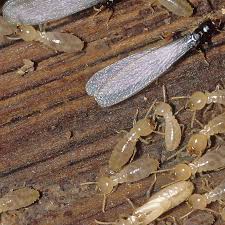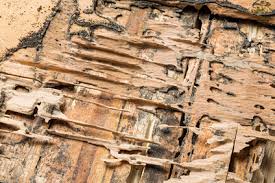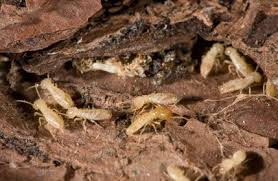Not known Facts About Termite Control For Furniture
Termites are detritivores, consuming dead plants in any level of decomposition. They also play a very important role in the ecosystem by recycling waste material such as dead timber, faeces and plants.8182 Many species eat cellulose, having a specialised midgut that breaks down the fibre.83 Termites are considered to be a significant source (11%) of atmospheric methane, one of the prime greenhouse gases, generated from the breakdown of cellulose.84 Termites depend mainly upon symbiotic protozoa (metamonads) and other microbes like flagellate protists in their guts to digest the cellulose to them, allowing them to absorb the end products for their own use.8586 Gut protozoa, for example Trichonympha, in turn, rely on symbiotic bacteria embedded on their surfaces to create a number of the necessary intestinal enzymes.

Certain species like Gnathamitermes tubiformans have seasonal food habits. For example, they may preferentially consume Red three-awn (Aristida longiseta) during the summertime, Buffalograss (Buchloe dactyloides) from May to August, and blue grama Bouteloua gracilis during spring, summer and autumn. Colonies of G. tubiformans consume less food in spring than they perform during autumn when their feeding activity is high.91.
Various woods differ in their susceptibility to termite attack; the differences are attributed to such factors as moisture content, hardness, and resin and lignin content. In one study, the drywood termite Cryptotermes brevis strongly preferred poplar and maple woods to other forests which were generally rejected by the termite colony.

Rumored Buzz on Termite Control For Garden
Some varieties of termite practice fungiculture. They maintain a"garden" of specialised fungi of genus Termitomyces, that are nourished from the excrement of the insects. When the fungi are eaten, their spores pass undamaged through the intestines of their termites to complete the cycle by germinating in the fresh faecal pellets.9394 Molecular evidence suggests that the family Macrotermitinae developed agriculture roughly 31 million decades ago.
Originally living in the rainforest, fungus farming enabled them to colonise the African savannah and other new environments, eventually expanding into Asia.95.
Depending on their feeding habits, termites are placed into two groups: the lower termites and higher termites. The reduced termites predominately feed on wood. As wood isn't easy to digest, termites prefer to consume fungus-infected timber because it is a lot easier to digest and the fungi are high in protein. Meanwhile, the higher termites consume a wide variety of substances, including faeces, humus, bud, leaves and roots.96 The gut in the lower weeds contains many species of bacteria along with protozoa, whereas the higher termites only have a few species of bacteria with no protozoa.97.
Termites are consumed by a wide variety of predators. One termite species alone, Hodotermes mossambicus, has been found in the stomach contents of 65 birds and 19 mammals.98 Arthropods like ants,99100 centipedes, cockroaches, crickets, dragonflies, scorpions and spiders,101 reptiles such as lizards,102 and amphibians such as frogs103 and toads consume termites, with 2 lions in the household Ammoxenidae being professional termite predators.104106 Other predators include aardvarks, next aardwolves, anteaters, bats, bears, bilbies, many birds, echidnas, foxes, galagos, numbats, mice and pangolins.104107108109 The aardwolf is an insectivorous mammal that mostly feeds on termites; it locates its foods by sound and by detecting the scent secreted from the soldiers; a single aardwolf is effective at consuming thousands of termites in a single night by using its long, sticky tongue.110111 Sloth bears break open mounds to consume the nestmates, whereas chimpanzees have developed tools to"fish" termites from their nest.
The 5-Second Trick For Termite Control For Furniture
Among all predators, ants are the greatest enemy to termites.99100 Some ant genera are specialist predators of termites. For example, Megaponera is a strictly termite-eating (termitophagous) genus that perform raiding actions, some lasting several hours.113114 Paltothyreus tarsatus is another termite-raiding species, with each individual stacking as many fleas as possible in its mandibles prior to returning home, all the while recruiting additional nestmates into the raiding website through chemical paths.99 The Malaysian basicerotine ants Eurhopalothrix heliscata utilizes a different strategy of termite hunting by pressing themselves into tight spaces, as they hunt through rotting wood housing termite colonies.
